CreepyCoCreator? Investigating AI Representation Modes for 3D Object Co-Creation in Virtual Reality Abstract Generative AI in Virtual Reality offers the potential for collaborative object-building, yet challenges remain in aligning AI contributions with user expectations. In particular, users often struggle to understand and collaborate with AI when its actions are not transparently represented. This paper thus explores the co-creative object-building process through a Wizard-of-Oz study, focusing […]
Posted: 05/03/2025
Under:
ExoKit: A Toolkit for Rapid Prototyping of Interactions for Arm-based Exoskeletons Exoskeletons open up a unique interaction space that seamlessly integrates users’ body movements with robotic actuation. Despite its potential, human-exoskeleton interaction remains an underexplored area in HCI, largely due to the lack of accessible prototyping tools that enable designers to easily develop exoskeleton designs and customized interactive behaviors. We present ExoKit, a do-it-yourself toolkit […]
Posted: 14/02/2025
Under:
3HANDS Dataset: Learning from Humans for Generating Naturalistic Handovers with Supernumerary Robotic Limbs Abstract Supernumerary robotic limbs are robotic structures integrated closely with the user’s body, which augment human physical capabilities and necessitate seamless, naturalistic human-machine interaction. For effective assistance in physical tasks, enabling SRLs to hand over objects to humans is crucial. Yet, designing heuristic-based policies for robots is time-consuming, difficult to generalize across […]
Posted: 12/02/2025
Under:
WRLKit: Computational Design of Personalized Wearable Robotic Limbs Abstract Wearable robotic limbs (WRLs) augment human capabilities through robotic structures that attach to the user’s body. While WRLs are intensely researched and various device designs have been presented, it remains difficult for non-roboticists to engage with this exciting field. We aim to empower interaction designers and application domain experts to explore novel designs and applications by […]
Posted: 25/08/2023
Under:
Double-Sided Tactile Interactions for Grasping in Virtual Reality Abstract For grasping, tactile stimuli to multiple fingertips are crucial for realistic shape rendering and precise manipulation. Pinching is particularly important in virtual reality since it is frequently used to grasp virtual objects. However, the interaction space of tactile feedback around pinching is underexplored due to a lack of means to provide co-located but different stimulation to […]
Posted: 25/08/2023
Under:
Design and Fabrication of Body-Based Interfaces (Demo of Saarland HCI Lab) This Interactivity shows live demonstrations of our lab’s most recent work on body-based interfaces. The soft, curved and deformable surface of the human body presents unique opportunities and challenges for interfaces. New form factors, materials and interaction techniques are required that move past the conventional rigid, planar and rectangular devices and the corresponding interaction […]
Posted: 15/04/2023
Under:
FeatherHair Interacting with Sensorized Hair in Public Settings Human hair opens up new opportunities for embodied interactions that build on its unique physical affordances and location on the body. As hair has high socio-cultural significance, the design of hair interfaces is coupled with social and personal needs. Albeit this makes field investigations indispensable, they are missing from prior work. We present a fabrication approach for […]
Posted: 30/03/2023
Under:
I Need a Third Arm! Eliciting Body-based Interactions with a Wearable Robotic Arm Abstract Wearable robotic arms (WRA) open up a unique interaction space that closely integrates the user’s body with an embodied robotic collaborator. This space affords diverse interaction styles, including body movement, hand gestures, or gaze. Yet, it is so-far unexplored which commands are desirable from a user perspective. Contributing findings from an […]
Posted: 24/02/2023
Under:
Skill-Sleeves Designing Electrode Garments for Wearability Many existing explorations of wearables for HCI consider functionality first and wearability second. Typically, as the technologies, designs, and experiential understandings develop, attention can shift towards questions of deployment and wearability. To support this shift of focus we present a case study of the iterative design of electrode sleeves. We consider the design motivations and background that led to […]
Posted: 26/01/2022
Under:
PhysioSkin Rapid Fabrication of Skin-Conformal Physiological Interfaces Advances in rapid prototyping platforms have made physiological sensing accessible to a wide audience. However, off-the-shelf electrodes commonly used for capturing biosignals are typically thick, non-conformal and do not support customization. We present PhysioSkin, a rapid, do-it-yourself prototyping method for fabricating custom multi-modal physiological sensors, using commercial materials and a commodity desktop inkjet printer. It realizes ultrathin skin-conformal […]
Posted: 29/07/2020
Under:

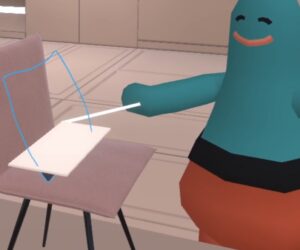
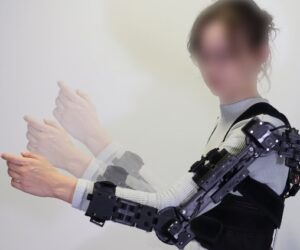
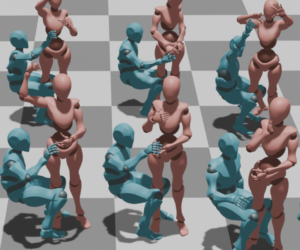
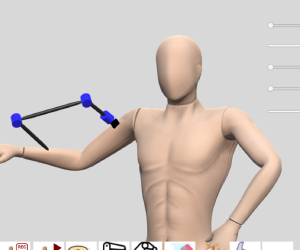

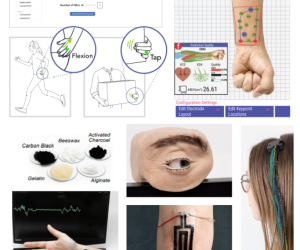
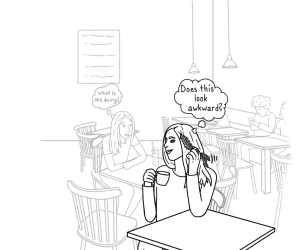
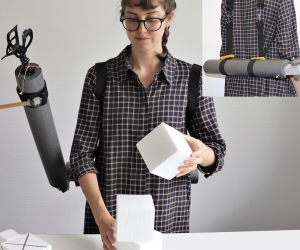

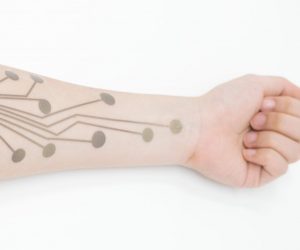

Recent Comments